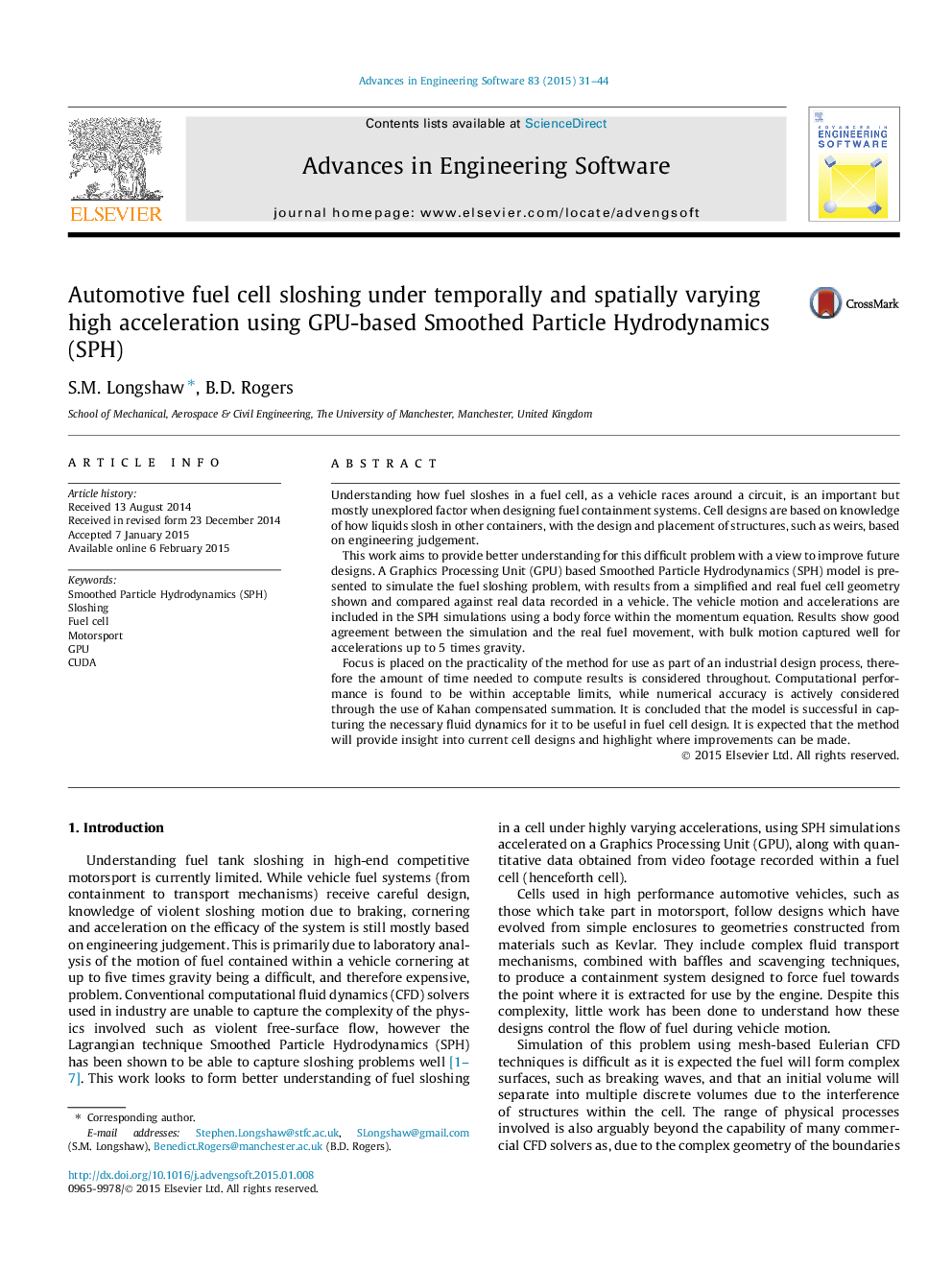| کد مقاله | کد نشریه | سال انتشار | مقاله انگلیسی | نسخه تمام متن |
|---|---|---|---|---|
| 568287 | 1452134 | 2015 | 14 صفحه PDF | دانلود رایگان |

• A Smoothed Particle Hydrodynamics model for automotive fuel sloshing is proposed.
• The model is implemented using Graphics Processing Units (GPUs).
• Attention is paid to computational performance ensuring usefulness within industry.
• Compensated summation is employed to maintain numerical accuracy.
• Simulation results are favourably compared against real-world sloshing data.
Understanding how fuel sloshes in a fuel cell, as a vehicle races around a circuit, is an important but mostly unexplored factor when designing fuel containment systems. Cell designs are based on knowledge of how liquids slosh in other containers, with the design and placement of structures, such as weirs, based on engineering judgement.This work aims to provide better understanding for this difficult problem with a view to improve future designs. A Graphics Processing Unit (GPU) based Smoothed Particle Hydrodynamics (SPH) model is presented to simulate the fuel sloshing problem, with results from a simplified and real fuel cell geometry shown and compared against real data recorded in a vehicle. The vehicle motion and accelerations are included in the SPH simulations using a body force within the momentum equation. Results show good agreement between the simulation and the real fuel movement, with bulk motion captured well for accelerations up to 5 times gravity.Focus is placed on the practicality of the method for use as part of an industrial design process, therefore the amount of time needed to compute results is considered throughout. Computational performance is found to be within acceptable limits, while numerical accuracy is actively considered through the use of Kahan compensated summation. It is concluded that the model is successful in capturing the necessary fluid dynamics for it to be useful in fuel cell design. It is expected that the method will provide insight into current cell designs and highlight where improvements can be made.
Journal: Advances in Engineering Software - Volume 83, May 2015, Pages 31–44